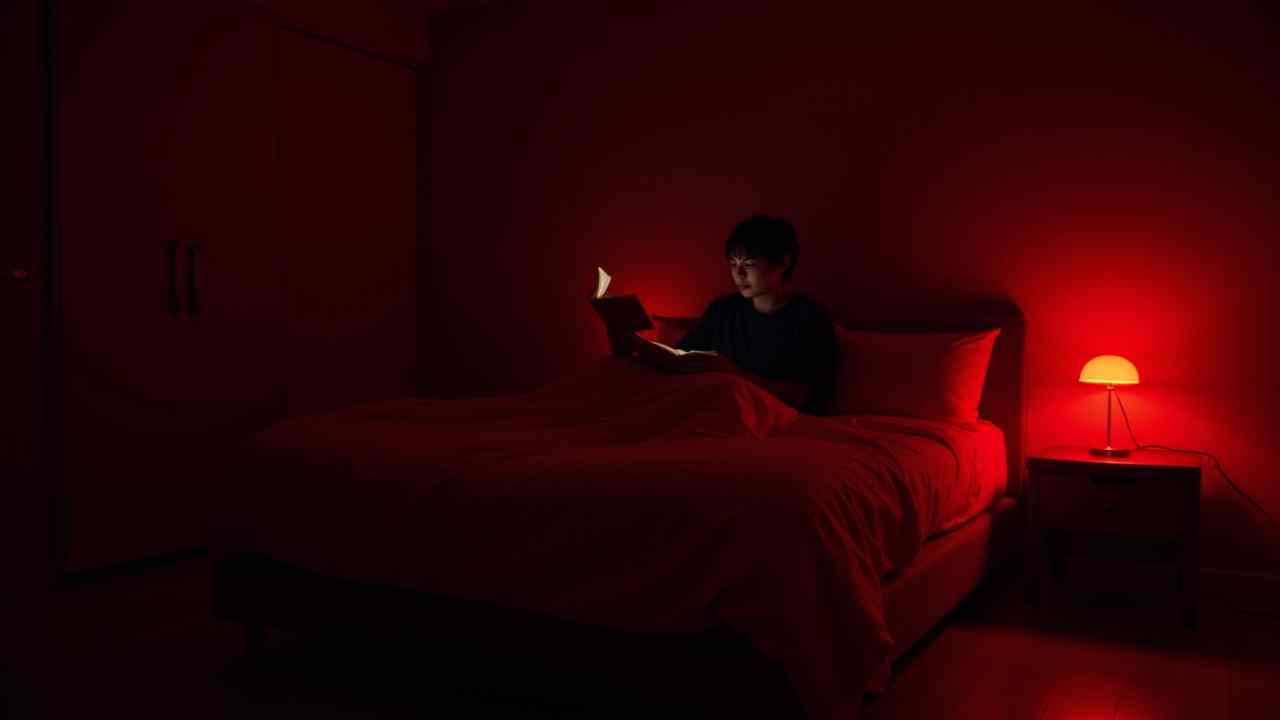
💡 Using Red Light for Sleep: A Guide to This Sleep Hack
💡 Can Red Light Help You Sleep? (A Guide to This Sleep Hack) 💡
We all know that looking at bright screens before bed can ruin our sleep. The blue light from our phones and laptops is a major culprit. But what if a different color of light could actually help you sleep better? This is the idea behind using red light for sleep.
This simple "biohack" has become very popular in the wellness community. It is a science-backed strategy. It is designed to work with your body's natural rhythms. It can help you create a sleep-friendly environment in your home.
This guide will explain the science behind this trend. We will explore how different colors of light affect your sleep. We will also show you how to use red light for sleep. Let's get you on the path to a more restful night. 😴
🤔 How Does Light Affect Your Sleep in the First Place?
To understand why red light is special, we first need to understand how light affects our brain. Your body has an internal clock. This is called your circadian rhythm. It controls your sleep-wake cycle. The most powerful signal for this clock is light.
What is the problem with blue light?
Your brain produces a hormone called melatonin when it gets dark. This is the "hormone of darkness." It is what makes you feel sleepy. However, our eyes have special receptors. These receptors are very sensitive to blue light.
When these receptors detect blue light (from the sun, bright overhead lights, and screens), they send a strong signal to your brain. This signal says, "It's daytime! Stop making melatonin!" This is why using your phone at night can keep you feeling wide awake.
🔴 Why is Red Light Different?
This is where the magic of red light for sleep comes in. Red light has a much longer wavelength and a lower color temperature than blue light. Because of this, it has a very different effect on your brain. It does not trigger the same alarm bells as blue light.
Red light does not stimulate those melatonin-suppressing receptors in your eyes. Your brain does not interpret it as a signal to wake up. This allows your body to continue its natural process of producing melatonin. You can wind down and get sleepy, even with a light on.
So, the benefit of red light is not that it actively makes you sleepy. The benefit is what it doesn't do. It does not stop you from getting sleepy. It is the only color of light that does not interfere with your body's natural sleep preparation.
⭐ What Are the Benefits of Using Red Light at Night?
Using red light for sleep as part of your evening routine has several benefits. It is a key part of good sleep hygiene. It can help to improve both the quality and the quantity of your rest.
- It Protects Melatonin Production: This is the main benefit. You can use a red light to read or get ready for bed without disrupting your circadian rhythm.
- It is Psychologically Calming: Many people find the warm, dim glow of red light to be very soothing and relaxing. It is much less jarring than bright, white light.
- It Can Improve Sleep Quality: By allowing your melatonin levels to rise naturally, you may find that you fall asleep faster. You may also experience a deeper, more restorative sleep.
💡 How Can You Incorporate Red Light into Your Bedtime Routine?
Adding red light to your evening is easy. There are a few simple and affordable ways to do it. You can start tonight.
Use Red Light Bulbs: This is the easiest method. Simply swap the lightbulb in your bedside lamp for a dedicated red light bulb. Use this as your only source of light for one to two hours before you plan to go to sleep.
Use a "Night Mode" on Your Devices: Most smartphones and computers have a setting. It can shift the screen's color to a warmer, redder tone in the evenings. Make sure this feature is enabled.
By making this simple change, you are sending the right signals to your brain. You are telling it that the day is over. It is time to rest. This is a powerful and natural way to support a great night's sleep. 🌙